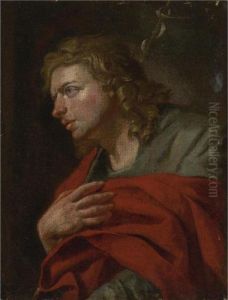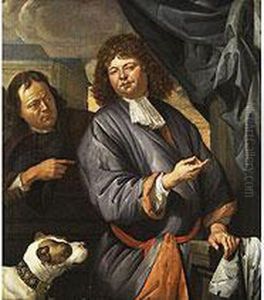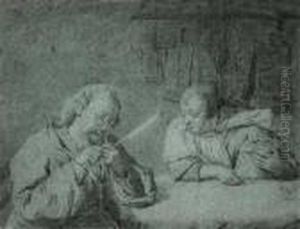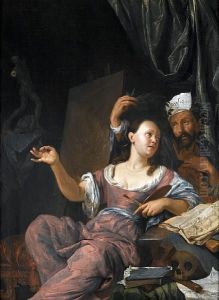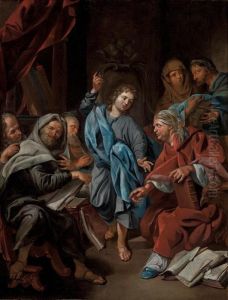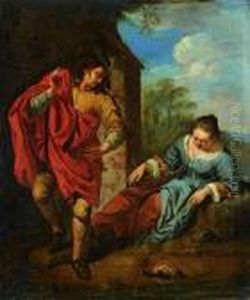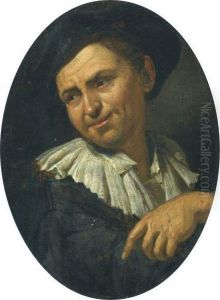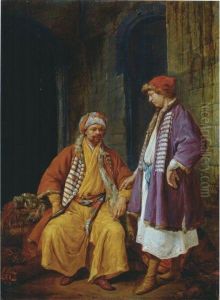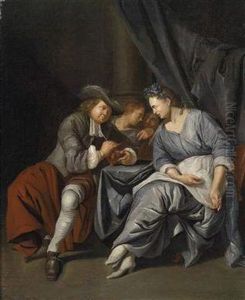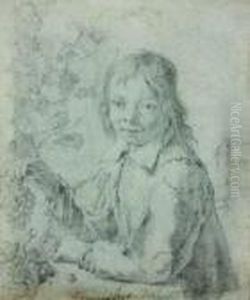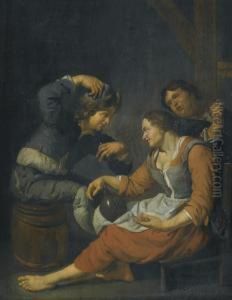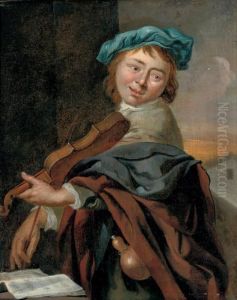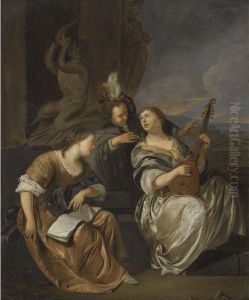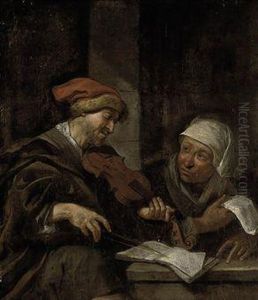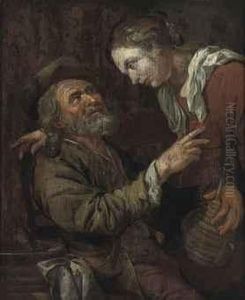Jacob Van Toorenvliet Paintings
Jacob Van Toorenvliet was a Dutch Golden Age painter born in Leiden, the Netherlands, in 1635. He hailed from a family of artists, as his father Abraham van Toorenvliet was a glass painter and his grandfather was the Leiden city stonecutter. Jacob was initially trained by his father before continuing his education under the guidance of the prominent Dutch painter Gerrit Dou, who was a student of Rembrandt.
Jacob's oeuvre includes a variety of subjects such as genre scenes, portraits, and historical paintings. His style was heavily influenced by Dou and thus, he is often associated with the Leiden School, known for its fine painting and attention to detail. Van Toorenvliet's work is characterized by its meticulous execution, smooth finish, and often, the use of a strong light-dark contrast, which was a hallmark of the Dutch Golden Age style.
Throughout his career, he enjoyed a certain level of success and recognition. Jacob traveled to Vienna and Rome, where he was exposed to different artistic influences and gained a broader perspective on art. His experiences abroad allowed him to incorporate elements of Italian elegance into his Dutch genre scenes, setting him apart from his contemporaries.
Despite his skills and the quality of his work, Jacob Van Toorenvliet did not achieve the same level of fame as some of his peers. Nevertheless, his paintings were sought after by collectors during his lifetime and they continue to be studied and appreciated for their contribution to the Dutch Golden Age of painting. Van Toorenvliet passed away in 1719 in his hometown of Leiden, leaving behind a legacy that, while not as well-known as some of his contemporaries, represents an important facet of 17th-century Dutch art.

